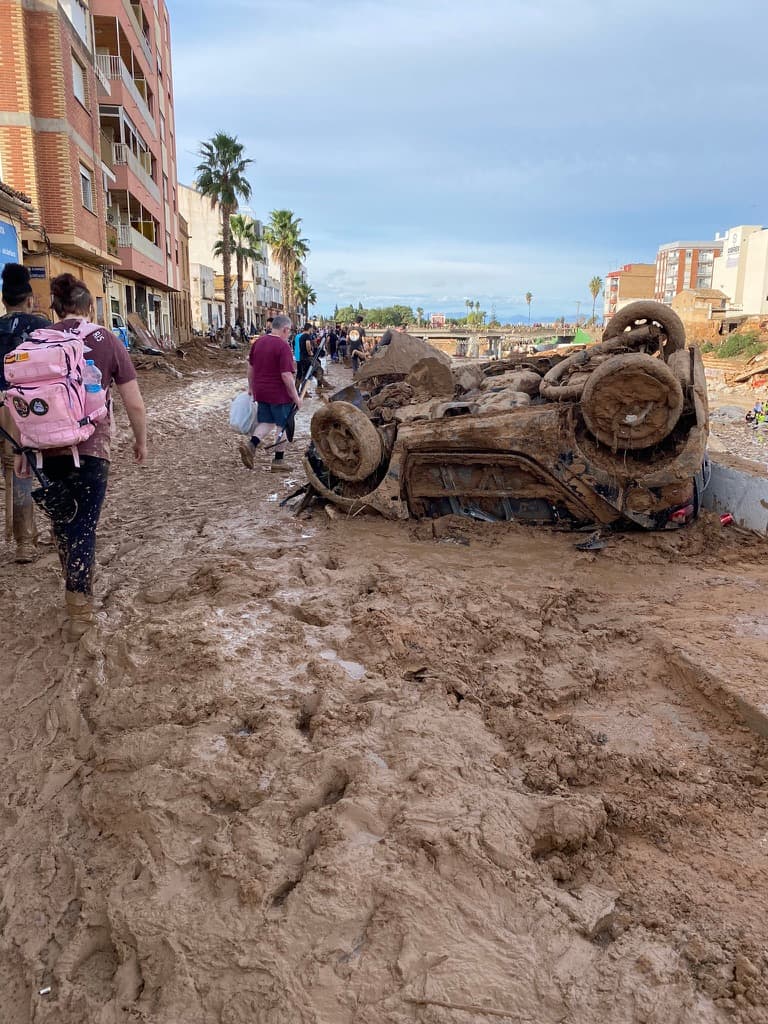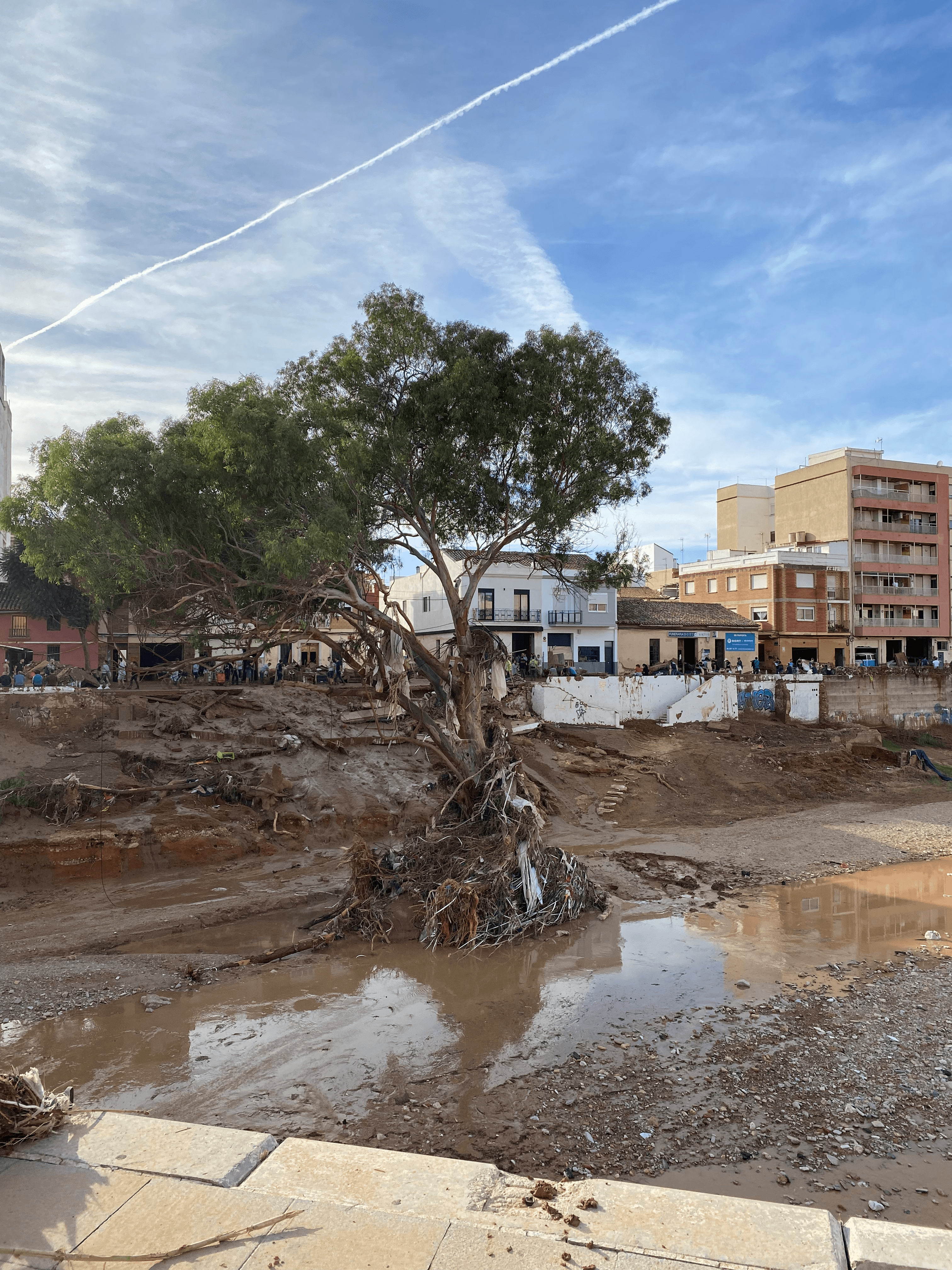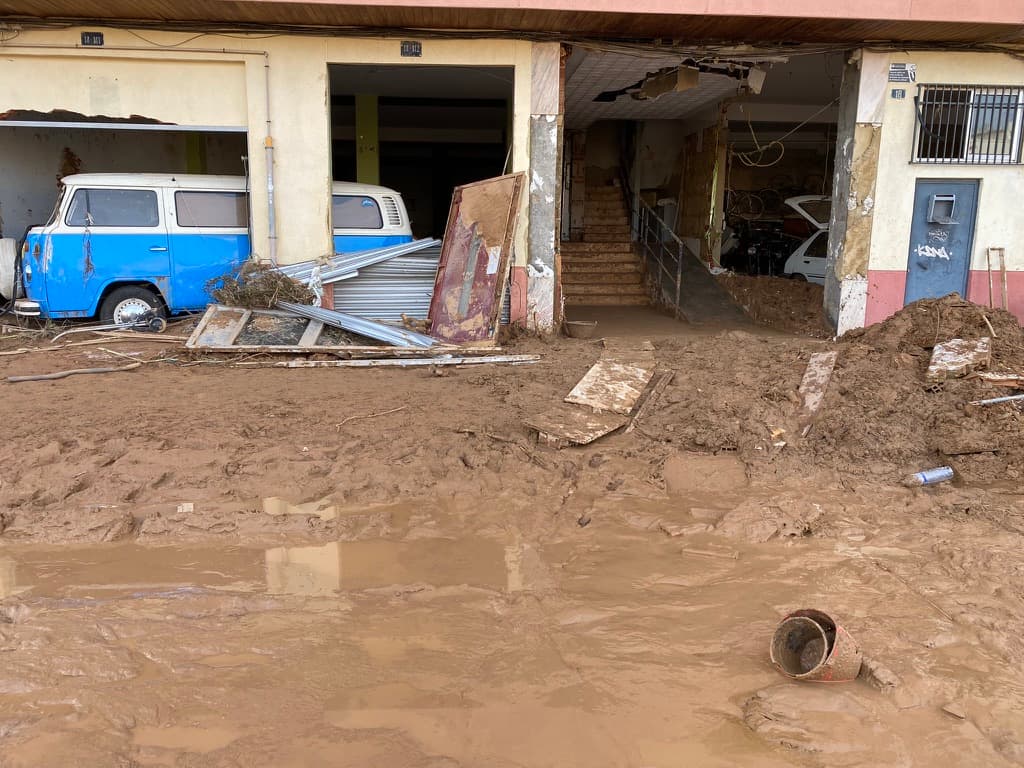Ajudadana was born to give people a place to request and offer help, as a relief measure in the face of the 2024 Dana disaster in Valencia, Spain.
TL;DR
In response to devastating floods in Valencia, I helped develop Ajudadana - a critical platform connecting flood victims with volunteers. The platform processed over 1,000 help requests and 10,000 volunteer offers in its first weeks. I focused on building request matching systems, contributing to a project that became a vital resource during the crisis. You can see my contributions in my GitHub profile.
The story
In the night of october 29th, 2024, torrential floods devastated numerous villages in the province of Valencia, leaving hundreds of deaths, and houses, business and general livelihood of the villages ravaged overnight. Government help faltered, and citizens took to mobilize themselves and provide help to the affected citizens and villages. There was, however, a huge logistics problem.


Different villagers needed different help, and volunteers didn't know where their help would be most needed. Some people would need food and water, others would need assistance cleaning the mud. Older citizens needed access to medicines, and others required the help of tradesmen to assist with plumbing, electricity, or other necessities. Volunteers would bring hoes and shovels to clean mud, non-perishable food and diapers for affected people, or medical and psychological help for assistance. The main problem is that it wasn't clear which village was in higher need of help, and even within that village, which street or house required immediate help. To help with that situation, https://ajudadana.es/ was created.

Within the span of three days, the website was up and running, helping to match people who seeked help with a specific situation with people who were willing to provide that help. The first few days after the disaster struck, I volunteered my time and energy cleaning rubble and mud off the streets and busineses. Once I found about this project, I felt I needed to help with this initiative with everything I could, so I traded rolling up my sleeves to clean mud to roll up my sleeves and code.
It was an extremely fast-paced environment where truly urgent requests were coming left and right. People in help needed to be able to update and delete their already-fulfilled requests. Volunteers who were calling people to match people offering help and requesting help needed specific CRM features to allow them to do this job. We had to make sure user privacy was kept as secure as possible, as even in the more dire situations there were bad actors with ill intentions. Overall, it was a very intense collaboration among several of us who volunteered our time and skills, with very positive outcomes. The website appeared on several news stations to spread people's knowledge about it, and was highly praised by those that used it to request for help. Overall, we received more than 1K requests of help and more than 10K offers to help.

Tech stack and implementation
The web was built using a combination of NextJS + TailwindCSS in the frontend and Supabase in the backend, giving us extreme speed of development and helping us ship very quickly features such as user authentication and with high security, thanks to Postgres Row Level Security.
Working under extreme time pressure, we had to balance rapid development with security and reliability. Key features included:
- Implementing secure user authentication while maintaining ease of access
- Creating a robust matching system between help requests and offers
- Ensuring data privacy and protection
This project taught valuable lessons about rapid deployment in crisis situations, balancing security with accessibility, and the importance of clear communication in team collaboration. The platform's success demonstrated how technology can effectively coordinate community response during natural disasters.